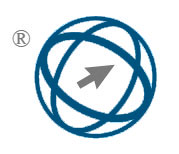Breast Mass Segmentation via Enhanced U-Net++ Using Gradient and Contrast Information Reconstruction
Abstract
This study introduces an innovative image enhancement technique to enhance breast mass segmentation in mammograms, where edge gradients are frequently feeble and concealed by adjacent tissues. The method combines gradient and contrast information reconstruction to improve essential structural aspects. Gradient reconstruction utilizes a total variation-based model integrated with Haar wavelet transform (HWT), efficiently attenuating high-frequency noise while retaining low-frequency structural details crucial for accurate mass boundaries. Edge features are obtained via the Scharr operator and enhanced through K-Singular Value Decomposition (K-SVD) dictionary learning, which develops adaptive basis functions to denoise and sharpen mass edges. Structural and edge reconstructions are linearly combined with weights of 0.7 and 0.3, respectively, resulting in improved images. The enhanced images are segmented utilizing a U-Net++ architecture, trained with a learning rate of 0.001, a batch size of 4, and the Adam optimizer, incorporating fivefold cross-validation for a thorough assessment. Experiments were performed on 60 mammographic images from the DDSM-BCRP subset, expanded to 360 samples. The proposed method attained a Dice coefficient of 96.52%, an IoU of 93.30%, a sensitivity of 96.56%, and an accuracy of 98.84%, surpassing baseline models. The enhanced segmentation enables more precise lesion localization within Computer-Aided Diagnosis (CAD) systems, thereby aiding in the early detection of breast cancer. Currently, validation is constrained to a modest dataset; subsequent efforts will aim to broaden the methodology to encompass larger, multi-institutional datasets to improve generalization.
Full Text:
PDFDOI: https://doi.org/10.31449/inf.v49i25.8483

This work is licensed under a Creative Commons Attribution 3.0 License.









